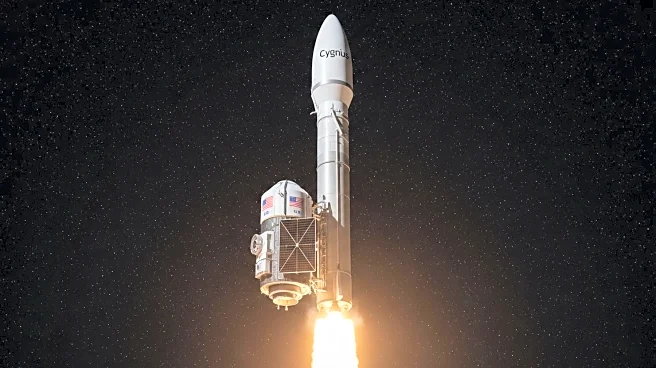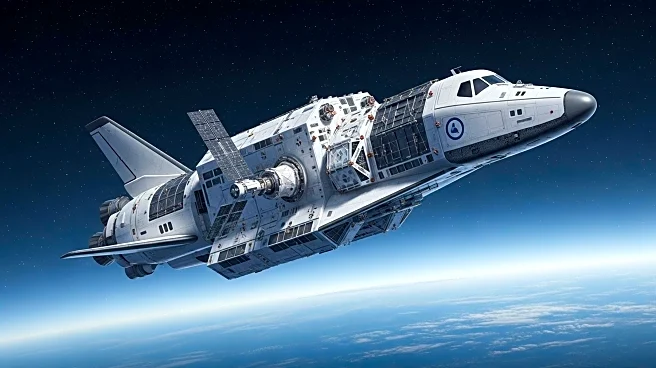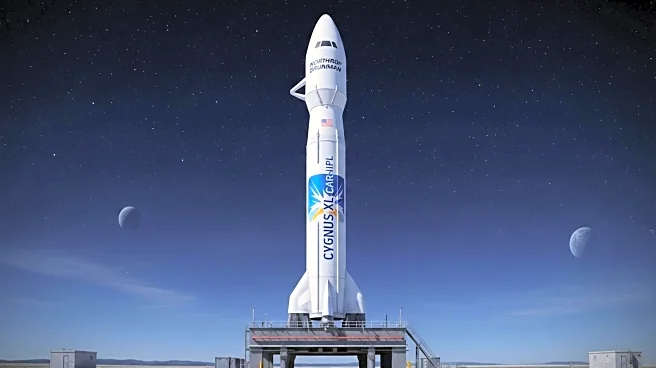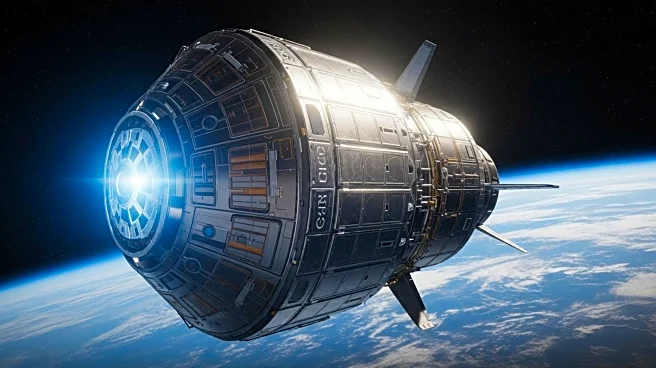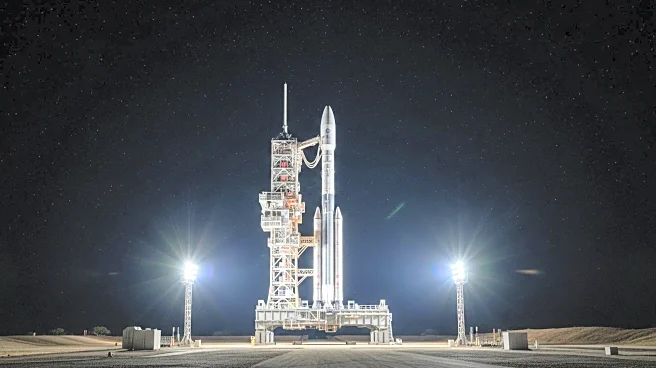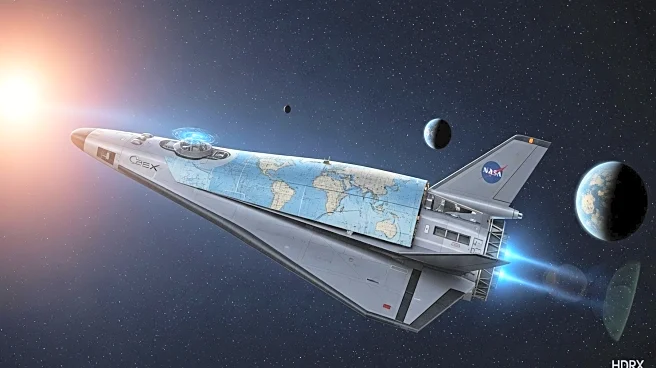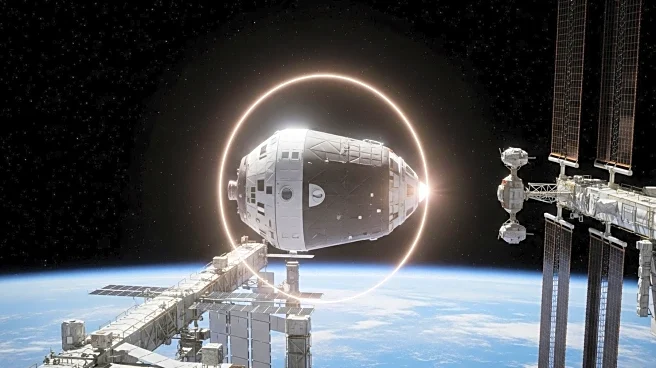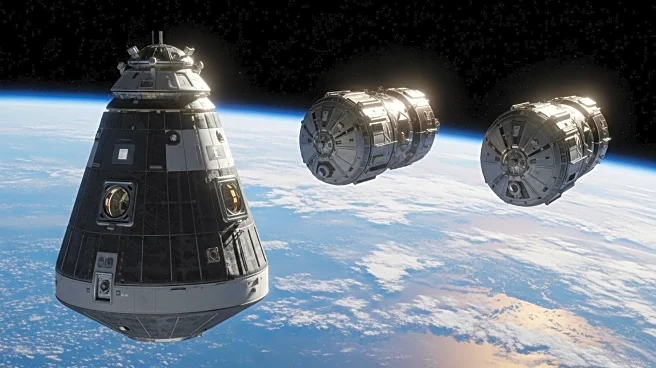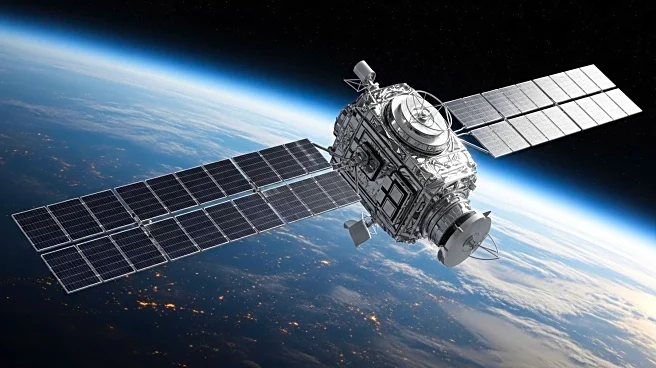What's Happening?
A Falcon 9 rocket successfully launched an upgraded Cygnus cargo spacecraft, known as Cygnus XL, to the International Space Station (ISS) on September 14. The launch took place from Space Launch Complex 40 at Cape Canaveral Space Force Station in Florida. The Cygnus XL features a larger cargo module, increasing its payload capacity by about a third to 5,000 kilograms. This mission, designated NG-23, marks the first flight of the Cygnus XL and the third Cygnus mission to launch on a Falcon 9 rocket. The spacecraft is scheduled to arrive at the ISS on September 17 and will remain there until next spring. NASA plans to temporarily unberth Cygnus in November to accommodate the docking of the Soyuz MS-28 spacecraft.
Why It's Important?
The successful launch of the Cygnus XL represents a significant advancement in cargo delivery capabilities to the ISS, enhancing the station's ability to support scientific research and crew supplies. The increased payload capacity allows for more efficient transportation of essential materials, potentially accelerating research and development activities aboard the ISS. This mission also highlights the ongoing collaboration between NASA and private aerospace companies like Northrop Grumman and SpaceX, which is crucial for the sustainability and expansion of space exploration efforts. The transition to using Falcon 9 rockets for Cygnus missions underscores the adaptability and reliability of commercial launch services in supporting NASA's objectives.
What's Next?
Following the successful docking of the Cygnus XL, NASA will continue to monitor its performance and integration with the ISS systems. The temporary unberthing planned for November will test the flexibility of station operations and the coordination required for multiple spacecraft dockings. Northrop Grumman is also working on developing the Antares 330 rocket in partnership with Firefly Aerospace, which is expected to be ready by 2026. This development will provide an additional launch option for future Cygnus missions, further diversifying the launch capabilities available to NASA.
